
Mountain Streams --Vol.6--
To place the dry fly on the water surface

Try to place the dry fly on the surface as gently as possible...
When I first immersed myself in fly fishing, I exclusively used the dry fly. My main concern was to develop the realm of possibility of the dry fly fishing. For example, how large area can I fish in the river and the lake? How intricate and strong current can I drift the fly on? How far can I drift the fly without causing the drag?
Fly Casting
To achieve these goals I tried to tie a buoyant fly and to look for the fly noticeable from far away. My greatest concern, above all, was to improve my casting technique for carrying the fly to the faraway water surface safely and accurately. Really, I longed for mastering fly fishing for two reasons. One was that I wanted to catch a fish with a fly, a lovely and mysterious thing to me. The other was that I wanted to cast the beautiful coloured line as if ---to be honest--I were a magician. When both factors meet well, a beautiful fish of wild nature jumps at my fly drifting on the water surface. Watching that magnificent scene immediately drove me to throw away my old lures. Almost all anglers that began fly fishing at that time were so excellent in lure fishing that they were satisfied with it no more. Probably lure fishing was too easy and simple for them.
The pleasure of fly fishing is casting the fly accurately at the farthest distance between the point and the angler.
When we had fine casting skill, the line extended beautifully beyond compare. Furthermore, the higher quality the line had, the more beautifully it extended. So every angler was very eager for casting practice in those days. Well, I have been a firm believer that it is definitely an aesthetic sense of a dandy that has supported the spirit of fly fishing. In short, good-looking style is very important. It would be shameful for fly fishermen to chase the fish without any regard for appearances. They should be a credit to a full-fledged angler. Excessive stalking, walking into the water at random, fishing without sufficient casting, all were not good-looking, like fishing a trout with bait or lure. In those days fly fishing was very rare not only in its style but also in the mental attitude of fly fishermen.

In a monotonous water surface, we need to drift the fly more naturally for a long time.
Where to stand
I repeated casting practice to make my fishing style good-looking. Fortunately, I could make good progress in a short time. I was pleased just to cast my fly farther, forming beautiful loops. Furthermore, the imaginary fishing scenes occurred to me endlessly, in which I carried my line to the faraway point where I had given up before. I could not wait to go fishing. In spring I went fishing to the river just open. I felt the river was narrower than the previous year. Probably my feeling came from the fact that I could carry my fly to the opposite bank easily. In summer I went fishing to the creek and I could change my fishing style. I used to almost crawl towards the fishing point with my head kept low but now I could fish from far behind very easily.Many years' experience of fishing naturally teaches anglers where fish are staying, where and how anglers should drift the fly in order to attract fish. When we find a good angling spot ahead of us, we should decide first from where to start fishing. Somehow, I made it my rule to start from the most interesting part of that spot. That meant I got started from the farthest part that I could ever cast to. When it went well, the line extended beautifully, the fly drifted beautifully and I could catch the fish perfectly. However, because I stood at the farthest possible point, I was not allowed to be careless, which led to failure of casting and no catch. I did not try to do the impossible, which meant to miss a lot of fish, but I also avoided crawling on the bank or walking into the current at random although I knew those actions would have given me increasing chance to catch my target fish. I stuck to my principle of casting the fly properly. It is the same concept as golf consists in hitting the ball with the club.

In the Noro river, the weight forward fly line was much better for casting the fly in the distance.
As I made better progress in casting skill, I could stand farther away from the fishing point. I felt more satisfied. I could catch a lot of fish. Although they were not so large, dry fly fishing gave me pleasure of casting. In addition, standing far from the fishing point meant hooking the fish far away, so I could fully enjoy fighting with those fish that were not so strong. I also liked to fish the low water and the shallow, wide and dull current because the long distance casting enabled me to get over the bad condition that fish ran away as soon as anglers approached it. In short, long casters had an advantage because they could keep an adequate distance from the fishing point. In those days I found myself excited and thrilled when I came across the difficult point that I had given up or hesitated in my early days of fly fishing.

The fish, if it is living in the river cautiously enough, is supersensitive to the fly drifting naturally or not.
Hope to place the dry fly on the water surface
When fly fishing was very new to see and to hear, that is, when no one could judge properly any information about fly fishing, most anglers believed that the weight forward line would spoil the superb presentation of the fly. Although the fact might have been different, that idea seemed the mainstream of the books and the magazines I read in those days. Imagine a bit and we feel it is true. But as far as I tested it, I found it false. On the contrary, the weight forward line was vastly superior. Later when I learned under the casting masters in those days, Mr. James Hardy, Mr. Leon Chandler and Mr. Charles Ritz, I asked them about that problem. All of them pointed out the superiority of the weight forward line and wondered why such a strange superstition spread among anglers. I supposed some reasons--- Anglers who denied the weight forward line might cast so short that the line belly was not pulled off the rod tip. They might often depend on roll cast. Or they might not be good at casting--- I wondered whether my guesses were groundless suspicions.Anyway, my concern in those days was to develop the realm of possibility of dry fly fishing. I was absorbed in polishing up my casting skill. How far can I cast the fly? How exactly can I settle the fly on the water surface? Even in the tough-looking current, there is a very limited course of the water along which we can drift the fly for a long distance without causing the drag. But its starting point is very narrow and time is often quite limited. So I had to cast the fly very accurately.
In order to drift the fly on the far away water surface, we have to cast long. When the long line extends high in the air, its centre part necessarily drops and sags. The drooping distance becomes longer as we cast longer. Therefore, when we cast the line longer, the line belly reaches the water first and drags the fly as soon as the latter reaches the water. We avoid that situation most effectively by cutting down the drooping distance. So it seems very clear that the weight forward line is more suitable than the double tapered one. But that superstition is likely to have stayed alive now for more than 20 years.

Where to stand? --to cast the fly to such current.
There was another superstition about how to settle the fly on the water surface. The mainstream believed that it would be ideal to settle the fly there as if a flower petal or a dandelion seed were whirling down. If the dry fly falls down in the air only due to its weight, it will fall slowly and land on the water surface calmly. But that also means the line and the leader fall down much earlier than the fly, which necessarily leads to cause the drag earlier. Undoubtedly, when the fly flutters to the water, the line and the leader will have already billowed out towards downstream. Otherwise, I am afraid that the fly line will not be pulled off the rod tip long enough to reach the water surface.
The idea that the fly should settle on the water surface calmly was surely reasonable and sensible in that time when the fly had only poor buoyancy. But if it causes the drag, we will get absolutely nothing out of it.
In this situation, I aimed at casting in the special way to enable the fly to settle on the water surface as if I had picked up it with my fingers and placed it on the water surface. The fly normally falls down due to its own weight after the line is fully extended. I tried to make the fly's dropping distance limitlessly null. In another word, I tried to control the line and the leader so that both extended to the very point where the fly was about to settle on the water surface. The fly does not look like settling on the water surface but looks as if it were placed there. When I cast the line whose belly never dropped or sagged just over a hairbreadth of the water surface, the fly really appeared on the water surface abruptly.
-- To be continued --
- NET SHOP INFORMATION
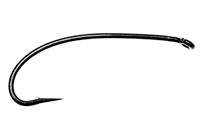
SL6 Black Spey Hooks
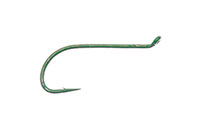
DU3 Limerick Spinner Hooks
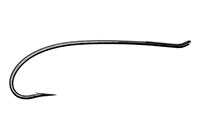
SL4 Single Bartleet Hooks
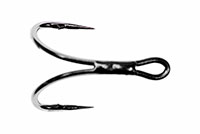
XD1 Tube Fly Double Hooks
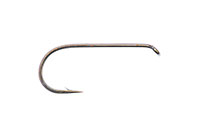
DD2 Flat Perfect Hooks
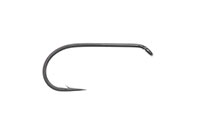
DD1 Black Terrestrial Hooks
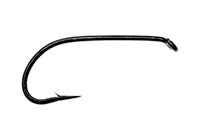
TD4 Old Limerick Wet Hooks
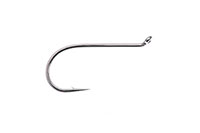
DU1 Silver May Hooks
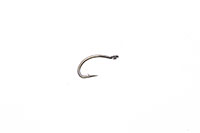
MU1 Flat Midge Hooks
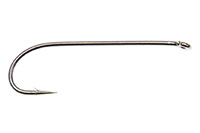
LD3 Long Limerick Hooks
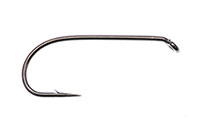
TD2 Summer Sproat Hooks
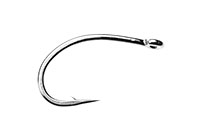
XS1 Tube Single Silver Hooks
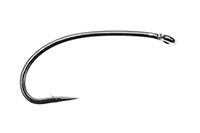
TD6 Siver Sedge Hooks

SL5 Black Spey Hooks

DU3 Limerick Spinner Hooks
- TROPHY CLUB
- FLY SHOW
- EXHIBITION
- MASTERS`
- FLY DRESSING CONTEST Archives
- TRAVELLER Archives
- TACKLE IMPRESSIONS Archives
- ANGLERS` PHOTO GALLERY Archives
- ----------------------------------------------
- トロフィークラブ
- フライショー
- エキシビション
- マスターズ
- フライドレッシング・コンテスト・アーカイヴ
- トラヴェラー・アーカイヴ
- タックル・インプレッション・アーカイヴ
- アングラーズ・フォトギャラリー・アーカイヴ
株式会社サワダ 185-0021 東京都国分寺市南町3-13-4
SAWADA'S INC. 3-13-4 Minamicho, Kokubunji, Tokyo 185-0021, Japan
写真・ドキュメントの無断転載を禁じます。
All the images and documents found on this site are owned by Ken Sawada and may not be used without permission.
But, link to this site is FREE.
Copyright © 2000 - 2025 SAWADA'S INC.. All rights reserved.
SAWADA'S INC. 3-13-4 Minamicho, Kokubunji, Tokyo 185-0021, Japan
写真・ドキュメントの無断転載を禁じます。
All the images and documents found on this site are owned by Ken Sawada and may not be used without permission.
But, link to this site is FREE.
Copyright © 2000 - 2025 SAWADA'S INC.. All rights reserved.
